23 High Zinc Foods for Vegans and Vegetarians
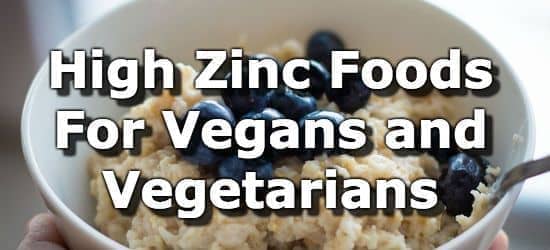
Zinc is an essential nutrient required by the body for creating over 300 enzymes, and maintaining our sense of taste and smell. (1,2)
Research has found several health benefits of getting enough zinc, including enhanced immune function, faster wound healing, and even reduced duration of the common cold. (3,4,5,6)
Zinc deficiency can lead to hair loss, impotence, delayed wound healing, abnormal taste sensations, and mental fatigue. (7,8)
Phytates, which are present in whole-grain breads, cereals, and legumes, can reduce the absorption of zinc in the digestive tract. (9) To compensate for this, it's recommended that vegans and vegetarians aim to consume about 50% more zinc than those in the general population. They may choose to eat foods fortified with zinc in order to ensure that they’re getting enough.
Although some people choose to take zinc supplements, it's important to use caution with these. Taking high-dose zinc supplements can lead to copper deficiency. These two minerals are absorbed in the same way in the digestive tract, and so they compete with each other for absorption. (10)
Vegan and vegetarian sources of zinc include fortified cereals, wheat germ, tofu, lentils, yogurt, oatmeal, wild rice, squash seeds, and milk. The daily value (DV) for zinc is 11mg per day. (11)
Below are 23 vegan and vegetarians foods high in zinc. For more, see the articles on high zinc nuts, high zinc fruits, and high zinc vegetables.
List of Vegetarian Zinc Foods
-
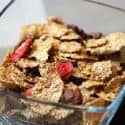 1. Fortified Cereals + Add
1. Fortified Cereals + Add
Zinc
per 3/4 CupZinc
per 100gZinc
per 200 Calories19mg
(170% DV)64mg
(585% DV)33mg
(300% DV)See the ranking of 200 breakfast cereals high in zinc.
-
2. Toasted Wheat Germ + Add
Zinc
per OzZinc
per 100gZinc
per 200 Calories5mg
(43% DV)17mg
(152% DV)9mg
(79% DV) -
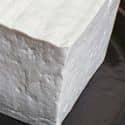 3. Firm Tofu + Add
3. Firm Tofu + Add
Zinc
per CupZinc
per 100gZinc
per 200 Calories4mg
(36% DV)2mg
(14% DV)2mg
(20% DV) -
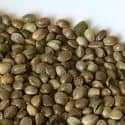 4. Hemp Seeds + Add
4. Hemp Seeds + Add
Zinc
per OzZinc
per 100gZinc
per 200 Calories3mg
(26% DV)10mg
(90% DV)4mg
(33% DV)Not sure how to use hemp seeds? Sprinkle them on top of cereal, salads, or oatmeal.
See the top 10 nuts and seeds high in zinc.
-
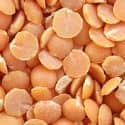 5. Lentils + Add
5. Lentils + Add
Zinc
per CupZinc
per 100gZinc
per 200 Calories3mg
(23% DV)1mg
(12% DV)2mg
(20% DV)See the nutrient ranking of all beans and lentils high in zinc.
-
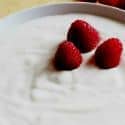 6. Low-Fat Yogurt + Add
6. Low-Fat Yogurt + Add
Zinc
per CupZinc
per 100gZinc
per 200 Calories2mg
(22% DV)1mg
(9% DV)3mg
(31% DV)See all dairy foods high in zinc.
-
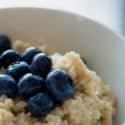 7. Oatmeal + Add
7. Oatmeal + Add
Zinc
per CupZinc
per 100gZinc
per 200 Calories2mg
(21% DV)1mg
(9% DV)3mg
(26% DV) -
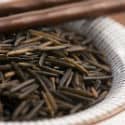 8. Wild Rice + Add
8. Wild Rice + Add
Zinc
per CupZinc
per 100gZinc
per 200 Calories2mg
(20% DV)1mg
(12% DV)3mg
(24% DV)- 13% DV zinc in 1 cup of brown rice
See the nutrient ranking of grains high in zinc.
-
9. Seeds (Squash and Pumpkin Seeds) + Add
Zinc
per 1oz HandfulZinc
per 100gZinc
per 200 Calories2mg
(20% DV)8mg
(69% DV)3mg
(24% DV) -
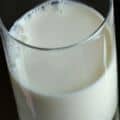 10. Milk + Add
10. Milk + Add
Zinc
per 16oz GlassZinc
per 100gZinc
per 200 Calories2mg
(19% DV)0mg
(4% DV)2mg
(18% DV) -
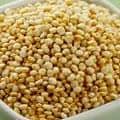 11. Quinoa + Add
11. Quinoa + Add
Zinc
per CupZinc
per 100gZinc
per 200 Calories2mg
(18% DV)1mg
(10% DV)2mg
(17% DV) -
 12. Shiitake Mushrooms + Add
12. Shiitake Mushrooms + Add
Zinc
per Cup CookedZinc
per 100gZinc
per 200 Calories2mg
(18% DV)1mg
(12% DV)5mg
(43% DV) -
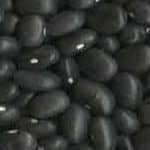 13. Black Beans (Frijoles Negros) + Add
13. Black Beans (Frijoles Negros) + Add
Zinc
per CupZinc
per 100gZinc
per 200 Calories2mg
(18% DV)1mg
(10% DV)2mg
(15% DV) -
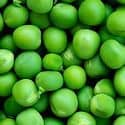 14. Green Peas + Add
14. Green Peas + Add
Zinc
per Cup CookedZinc
per 100gZinc
per 200 Calories2mg
(17% DV)1mg
(11% DV)3mg
(26% DV)See the top 10 vegetables high in zinc. -
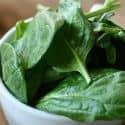 15. Spinach + Add
15. Spinach + Add
Zinc
per Cup CookedZinc
per 100gZinc
per 200 Calories1mg
(12% DV)1mg
(7% DV)7mg
(60% DV) -
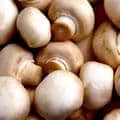 16. White Button Mushrooms + Add
16. White Button Mushrooms + Add
Zinc
per Cup CookedZinc
per 100gZinc
per 200 Calories1mg
(12% DV)1mg
(8% DV)6mg
(56% DV) -
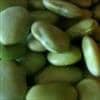 17. Lima Beans + Add
17. Lima Beans + Add
Zinc
per Cup CookedZinc
per 100gZinc
per 200 Calories1mg
(12% DV)1mg
(7% DV)1mg
(12% DV) -
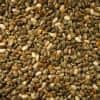 18. Chia Seeds + Add
18. Chia Seeds + Add
Zinc
per oz(~2 Tblsp)Zinc
per 100gZinc
per 200 Calories1mg
(12% DV)5mg
(42% DV)2mg
(17% DV) -
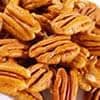 19. Pecans + Add
19. Pecans + Add
Zinc
per OzZinc
per 100gZinc
per 200 Calories1mg
(12% DV)5mg
(41% DV)1mg
(12% DV) -
20. Avocados + Add
Zinc
per AvocadoZinc
per 100gZinc
per 200 Calories1mg
(12% DV)1mg
(6% DV)1mg
(7% DV) -
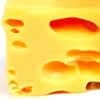 21. Swiss Cheese + Add
21. Swiss Cheese + Add
Zinc
per OzZinc
per 100gZinc
per 200 Calories1mg
(11% DV)4mg
(40% DV)2mg
(20% DV) -
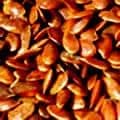 22. Flax Seeds + Add
22. Flax Seeds + Add
Zinc
per OzZinc
per 100gZinc
per 200 Calories1mg
(11% DV)4mg
(39% DV)2mg
(15% DV) -
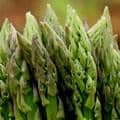 23. Asparagus + Add
23. Asparagus + Add
Zinc
per Cup CookedZinc
per 100gZinc
per 200 Calories1mg
(10% DV)1mg
(5% DV)5mg
(50% DV)
Zinc Requirements By Age and Gender
The recommended daily allowance (RDA) for zinc ranges from 3mg to 11mg per day, depending on a person's age and gender. The daily value for zinc is 11mg per day. (11) The daily value is a general guideline that will prevent deficiency for most people and is listed on food labels, while the RDA is specific for age and gender.
| Life Stage | RDA |
|---|---|
| Infants | |
| 0-6 months old* | 2mg |
| 7-12 months old | 3mg |
| Children | |
| 1-3 years old | 3mg |
| 4-8 years old | 5mg |
| Males | |
| 9-13 years old | 8mg |
| 14-18 years old | 11mg |
| 19-50 years old | 11mg |
| 50+ years old | 11mg |
| Females | |
| 9-13 years old | 8mg |
| 14-18 years old | 9mg |
| 19-50 years old | 8mg |
| 50+ years old | 8mg |
| Pregnancy | |
| 14-18 years old | 12mg |
| 18+ years old | 11mg |
| Lactation | |
| 14-18 years old | 13mg |
| 18+ years old | 12mg |
Source: Dietary Reference Intakes for Zinc.
From the Nutrient Ranking Tool
Use the ranking tool links below to select foods and create your own food list to share or print.
- Foods High in Zinc
- Foods Low in Zinc
- Vegetables High in Zinc
- Fruits High in Zinc
- Vegetarian Foods High in Zinc
- Nuts High in Zinc
- Grains High in Zinc
- Beans High in Zinc
- Dairy High in Zinc
- Breakfast Cereals High in Zinc
- Fast Foods High in Zinc
View more nutrients with the nutrient ranking tool, or see ratios with the nutrient ratio tool.
Related
Data Sources and References
- Zastrow ML, Pecoraro VL. Function and mechanism of zinc metalloenzymes Biochemistry. 2014 Feb 18;53(6):957-78. doi: 10.1021/bi4016617. Epub 2014 Feb 7. 24506795
- Doty RL. Zinc and the special senses Handb Clin Neurol. 2019;164:229-246. doi: 10.1016/B978-0-444-63855-7.00015-0. 31604550
- Rasouli M, Rahimi A, Soleimani M, Keshel SH. Zinc in Wound Healing Modulation Acta Histochem. 2021 Oct;123(7):151785. doi: 10.1016/j.acthis.2021.151785. Epub 2021 Sep 6. 34500185
- Haase H, Rink L. Zinc and the immune system Metallomics. 2014 Jul;6(7):1175-80. doi: 10.1039/c3mt00353a. 24531756
- Singh M, Das RR. Zinc for the common cold Cochrane Database Syst Rev. 2015 Apr 30;2015(4):CD001364. doi: 10.1002/14651858.CD001364.pub5. 25924708
- Crider K, Williams J, Qi YP, Gutman J, Yeung L, Mai C, Finkelstain J, Mehta S, Pons-Duran C, Menéndez C, Moraleda C, Rogers L, Daniels K, Green P. Zinc Supplementation Reduces Common Cold Duration among Healthy Adults: A Systematic Review of Randomized Controlled Trials with Micronutrients Supplementation Cochrane Database Syst Rev. 2022 Feb 1;2(2022):CD014217. doi: 10.1002/14651858.CD014217. 36321557
- Crider K, Williams J, Qi YP, Gutman J, Yeung L, Mai C, Finkelstain J, Mehta S, Pons-Duran C, Menéndez C, Moraleda C, Rogers L, Daniels K, Green P. Zinc Deficiency Cochrane Database Syst Rev. 2022 Feb 1;2(2022):CD014217. doi: 10.1002/14651858.CD014217. 36321557
- Crider K, Williams J, Qi YP, Gutman J, Yeung L, Mai C, Finkelstain J, Mehta S, Pons-Duran C, Menéndez C, Moraleda C, Rogers L, Daniels K, Green P. Zinc Deficiency Cochrane Database Syst Rev. 2022 Feb 1;2(2022):CD014217. doi: 10.1002/14651858.CD014217. 36321557
- Gibson RS, Raboy V, King JC. Dietary factors influencing zinc absorption Nutr Rev. 2018 Nov 1;76(11):793-804. doi: 10.1093/nutrit/nuy028. 30010865
- Stagg MP, Miatech J, Majid B, Polala R. Zinc-Induced Copper Deficiency as a Rare Cause of Neurological Deficit and Anemia Cureus. 2024 May 7;16(5):e59796. doi: 10.7759/cureus.59796. eCollection 2024 May. 38846187
- U.S.FDA - Daily Value on the New Nutrition and Supplement Facts Labels
Simplify Nutrition Tracking with MyFoodData!
Speedy Tools and Detailed Data FREEEasily analyze your meals to find the best foods for your goals.
✅ Use our recipe nutrition calculator and nutrition comparison tool.
✅ Access expert nutrition data tools and in-depth articles.
✅ Log foods and organize your recipes with a free account.


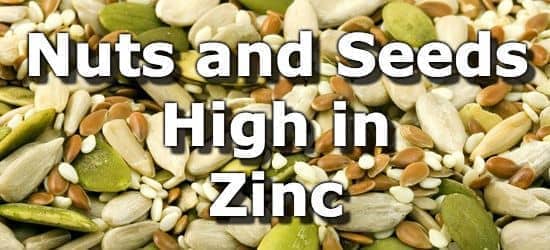 Next ➞
Next ➞
